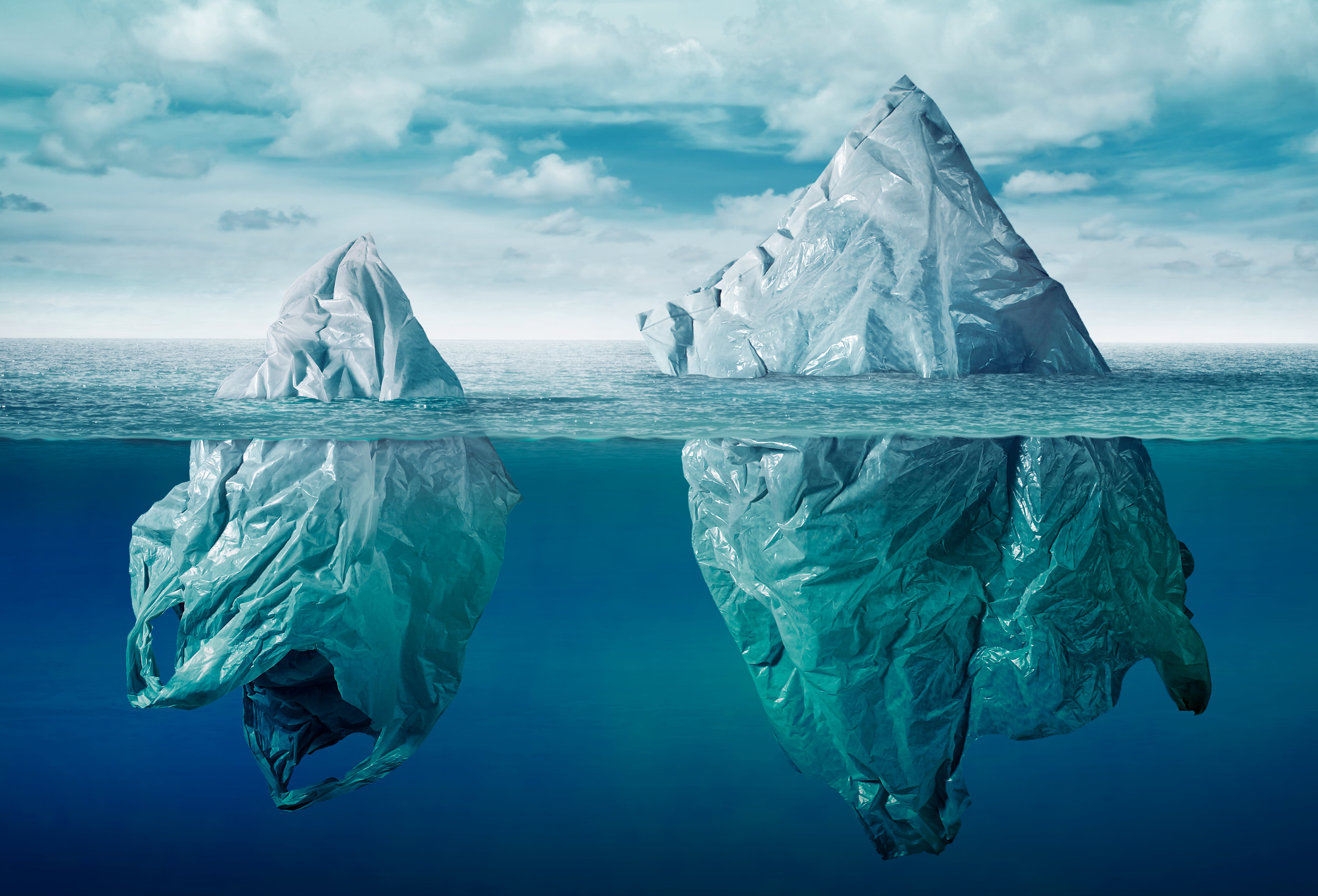 Miles away from any computer, tablet, or cell phone, the ocean is calm and peaceful. Marine life flows with ease, and the only soundtrack is nature itself. It’s a beautiful picture. One that propels people all over the globe to seek out the shores of its beaches, looking to experience the paradise of the world around them. Yet the very electronics keeping everyone tethered to the chaos of their lives, the ones that they so often strive to get away from, may very well be the devices that help save it.
Miles away from any computer, tablet, or cell phone, the ocean is calm and peaceful. Marine life flows with ease, and the only soundtrack is nature itself. It’s a beautiful picture. One that propels people all over the globe to seek out the shores of its beaches, looking to experience the paradise of the world around them. Yet the very electronics keeping everyone tethered to the chaos of their lives, the ones that they so often strive to get away from, may very well be the devices that help save it.
Oceans are central to existence. Without them, the ecosystem would be thrust into a chaos that would eventually lead to the demise of the planet. It sounds extreme, apocalyptic almost, but the drama of the situation is solidified in scientific fact. Without our oceans, the rain would stop-or at the very least be an extremely rare occurrence-the topography of our world would morph from lush greenery to a giant barren desert. For Floridians who suffer through torrential rainstorms on a daily basis, the idea of no rain sounds like a vacation, but the outlook of life without oceans is grim at best.
Oceans are the great regulators of the planet, keeping temperatures around the globe in check and consistently feeding water to the skies. Humanity would survive, but only for a short time. Sustained only by melting icecaps and underground aquifers and even then these resources would be limited. Eventually, due to the rising surface temperatures, spontaneous fires would break out and all manner of flora and fauna would die off. With the lack of fresh carbon, the amount of breathable air would diminish, eventually stopping all human life on earth. There is a great balance to be kept, and at the heart of this balance is water.
 With all of this in mind, we have to ask, why does society seem to balk at the conversation of protecting the oceans? Is it the age-old tale of ‘perception is reality?’ Does humanity have a gross misunderstanding that because there is water on the planet it must be useable? In 2017 the United Nations conducted a study showing that if we change nothing-if we keep going as is-then by the year 2050 there will be more plastic in the ocean than fish. The longer we ignore the problem the closer we are to the edge of an issue that within our lifetime, may render itself unfixable. Humanity desperately needs to move away from the ‘out of sight out of mind’ mentality as this is a problem that affects everyone on a global and local scale. The plastics in the ocean are seeping into every aspect of our daily lives. Without being too heavy handed on the ocean analogies, our polluted oceans are a tidal wave of a problem approaching a society who has its back turned.
With all of this in mind, we have to ask, why does society seem to balk at the conversation of protecting the oceans? Is it the age-old tale of ‘perception is reality?’ Does humanity have a gross misunderstanding that because there is water on the planet it must be useable? In 2017 the United Nations conducted a study showing that if we change nothing-if we keep going as is-then by the year 2050 there will be more plastic in the ocean than fish. The longer we ignore the problem the closer we are to the edge of an issue that within our lifetime, may render itself unfixable. Humanity desperately needs to move away from the ‘out of sight out of mind’ mentality as this is a problem that affects everyone on a global and local scale. The plastics in the ocean are seeping into every aspect of our daily lives. Without being too heavy handed on the ocean analogies, our polluted oceans are a tidal wave of a problem approaching a society who has its back turned.
The issue of ocean pollution is not a new one; it’s one that has been growing for generations. In the 1960s, plastic was touted as the item to make life simpler. It was reusable, durable, and cheaper to manufacture than other options. As consumers began to purchase the product in masses, manufactures found more ways to use it. Soon, single-use products started hitting shelves. Plastic bags, water bottles, single-use take out containers. This is where the problem worsened. Single-use plastics are everywhere; what we didn’t account for was it reaching the deepest depths of our oceans.
The internet is packed with videos concerning what scientists have dubbed The Great Pacific Garbage Patch. According to SmithsonianMag.com, the Great Pacific Garbage Patch contains 79,000 metric tons of plastic. Having a pile of toxins of this magnitude in the ocean is a disturbing thought, however, the Great Pacific Garbage Patch is not alone. Conservation.org reports that there are 5 total garbage patches floating around with the largest of its kind being the Great Pacific Garbage Patch. These plastics are seeping noxious chemicals into our oceans, and as they are consumed by marine life-then the marine life is consumed by humans -the transfer of contaminants becomes cyclical.
 Living in Marion County we are surrounded by water. Driving east, west, or south for a few hours and you will find yourself at a beach. This doesn’t take into account the many lakes, rivers, streams, and natural waterways in between. Water is a way of life in Florida; it’s one of the perks of living in paradise, but without people taking action to keep our environment clean that paradise can quickly turn into an unlivable situation. Thankfully there are those who are committed to finding a solution.
Living in Marion County we are surrounded by water. Driving east, west, or south for a few hours and you will find yourself at a beach. This doesn’t take into account the many lakes, rivers, streams, and natural waterways in between. Water is a way of life in Florida; it’s one of the perks of living in paradise, but without people taking action to keep our environment clean that paradise can quickly turn into an unlivable situation. Thankfully there are those who are committed to finding a solution.
In an age of constant communication where life is viewed through the scope of a six-inch screen, our ecosystem has found an unlikely ally in social media. One of the greatest challenges of environmentalists has been the lack of education to the masses. It’s not that the information wasn’t there, it’s that getting the word out to everyone on a mass scale was difficult and costly. Now, thanks to the advances in technology, we live in a world where dispersing information is the least of our problems. As the years go on, more attention is being paid to our sustainability simply because more people are talking about it, and the one place they are communicating is on social media.
Facebook, Twitter, Snapchat, and the myriad of other networks have taken the conversation to a new level. Marketwatch reported in 2018 that the average adult spends more than 11 hours a day staring at a screen. We are consuming information at a rapid rate, and it has given voice to a whole audience of people who are ready to lead the charge for environmental change.
This movement of ‘clicktivism’ is often criticized as a copout. There are some who feel it’s merely complaining disguised as activism. Keyboard warriors who would rather talk on a social platform rather than put action behind the ideals. Yet, no real change begins without conversation. One of the best attributes of social media is not just showcasing those who are doing great things but in putting pressure on larger companies and politicians to change the policies and procedures that are causing the issues.
The Institute for Humane Education reported that “the main reason teens volunteered was because their friends were doing it.” So while there are always negative effects of peer pressure, environmental change is one area where the social pressure can be a good thing. Time Magazine reporter Sophia Rosenbaum reported how a simple video by marine biologist Christine Figgener showing a turtle with a straw stuck through its nose went viral virtually overnight, and within 48 hours the internet was awash with social media influencers encouraging their followers to do away with plastic. This action of ‘clicktavism’ put pressure on corporations who mass amounts of single-serve plastic to reduce their usage and do away with their practices. Starbucks was the first mega-corporation to announce its alignment with this ideal. Shortly after many other companies started following suit including American Airlines, Disney, Hyatt, and many others.
Unfortunately, our conservation efforts are far from being over, and the cleanup of the Giant Pacific Garbage Patch proves difficult. With water currents constantly shifting and the continued flow of plastics into our ocean, it may take some time before this problem is solved. The system isn’t perfect, and it may take decades for society to implement these changes on a mass scale, but every step leads towards a common goal. For this very reason, we cannot discount the efforts that are being made every day.
To dismiss the power of conversation on social media is to deny the power of dialogue, regardless of its medium. Communication always has been, and always will be, the catalyst for change in an ever-evolving society. There is no denying that social media can be an exhausting place filed with the white noise of the day. We can grow weary of the constant bombardment of news, but there is a side of social networks that can be used for the betterment of society, and that is where we need to place our focus. So let’s ‘look for the helpers,’ and let’s join together to keep the conversation going.






